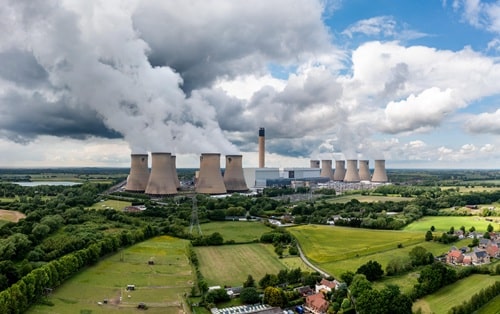Protecting Carbon Capture Assets from Carbon Acidic Corrosion
Carbon Capture Corrosion
Corrosion presents a significant challenge across the carbon capture, utilization, and storage (CCUS) value chain, encompassing capture, transport, and storage. The problem is CO₂, which forms carbonic acid (H₂CO₃) in the presence of water, leading to widespread metal degradation.
Impurities like H₂S, SOx, NOx, and O₂ can form even more aggressive acids (e.g., sulfuric and nitric), multiplying the corrosion risk.
Common Damage Mechanisms
- Uniform corrosion
- Pitting
- Crevice corrosion
- Stress corrosion cracking
This creates safety concerns, unexpected downtime, and increased costs. Managing corrosion effectively is essential for reliable, long-term CCUS performance.
Where Corrosion is Most Common in CCUS Systems
Post-Combustion Capture
Amine-based systems are vulnerable to:
- Heat-Stable Salts (HSS) – Formed from amine degradation, compromising lean solvent loops.
- Flue Gas Contaminants – SOx and NOx drop pH and raise corrosion rates.
- High-Temperature Zones – Stress corrosion cracking and pitting are common.
Pre-Combustion Capture
Corrosion challenges in syngas processing include:
- Sulphidation & HTHA (High-Temperature Hydrogen Attack)
- CO-Induced Cracking in low-temp zones
- Acid Gas Attack from CO₂ and H₂S
- Hydrogen Embrittlement in thick-walled vessels
Traditional Strategies – Expensive or Ineffective?
Operators have long relied on several conventional methods to combat corrosion, yet each comes with significant limitations. The use of high-cost materials such as stainless steels and corrosion-resistant alloys (CRAs) drives up capital expenditure, and even these materials are not immune to failure if operating conditions change. Stainless steels, for example, remain susceptible to hydrogen-induced corrosion (HIC), which can compromise long-term integrity.
Chemical inhibitors are another common strategy but involve continuous operational expenditure due to recurring dosing and monitoring requirements. Their application can also be complex, with potential environmental impacts and compatibility concerns within existing systems.
Organic coatings and linings provide a temporary barrier but often suffer from a limited lifespan. They are prone to mechanical damage, delamination, and degradation when exposed to harsh chemical or temperature conditions.
Finally, process control through dehydration seeks to manage corrosion by removing water from the system, yet this approach is energy intensive and capital-demanding. Moreover, operational upsets can easily undermine its effectiveness, allowing corrosion to persist.

The Solution – IGS HVTS® On-Site Alloy Upgrade
IGS HVTS (High Velocity Thermal Spray) is not just a cladding, it’s a permanent, on-site alloy upgrade for carbon steel equipment.
How It Works
We apply a custom corrosion-resistant alloy, like nickel-based materials, at high velocity to internal equipment surfaces. The result is a dense, non-porous cladding that behaves like solid corrosion resistant alloy (CRA.)
Key Advantages
- Permanence – Decades-long protection with no degradation.
- Cost-Efficiency – CRA-grade resistance at a fraction of the price.
- On-Site Application – Performed during turnarounds or new build stages, no shipping large equipment required.
- Versatility – Ideal for new builds or refurbishing existing corroded equipment.
- Proven Track Record – Decades of global use in harsh environments – refining, petrochemical, power, and carbon capture.
IGS HVTS vs. Traditional Methods
| Approach | Drawbacks | HVTS Advantage |
| CRAs (Stainless, Inconel, etc.) | High cost, procurement delays | Equivalent performance, fast on-site application |
| Chemical Inhibitors | Ongoing costs, complex operation, environmental concerns | Passive, low-maintenance barrier |
| Coatings/Linings | Damage-prone, short lifespan | Dense, alloy-based, long-term solution |
| Process Control Only | Vulnerable to upsets | Adds a vital safety layer |
| Welding & Internal Lining | Sometimes requires post-weld heat treatment, slower to apply, higher cost | HVTS installs cold, no heat treatment needed, 3x faster than WOL |

Why HVTS is the Right Choice for CCUS
By applying a robust, impermeable alloy barrier, HVTS inhibits H₂CO₃ corrosion and impurity attacks at their source, without the trade-offs associated with traditional methods.
- Extend equipment lifespan
- Eliminate recurring corrosion costs
- Protect your carbon capture infrastructure from the inside out
Contact us today to see how IGS can permanently solve your carbon capture corrosion challenges, with technology that’s trusted globally.
Free consultation with an IGS Subject Matter Expert
IGS is here to provide information, answer questions and create an effective solution for your needs.
